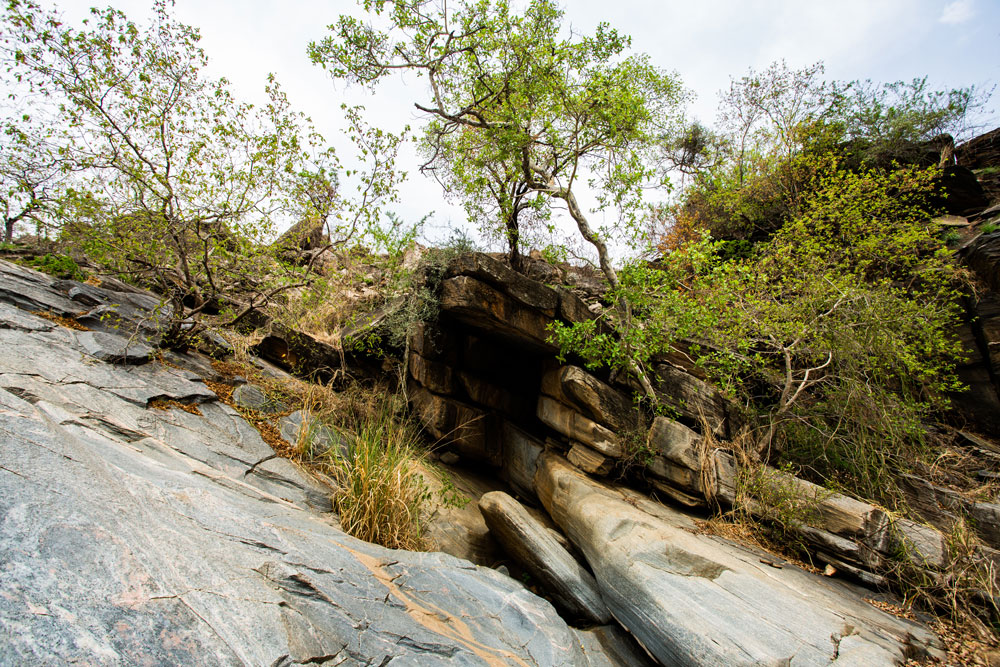Nyipir/ Gipir’s first resting point
After the separation at Wang-Lei, Nyipir/Gipir and his people are reported to have moved via Atara, Got Mai, Abongu, and Oguru II to Kasegali in the current Amojo village, Ayila Parish, Alwi Sub-county, Pakwach district (in Alwi chiefdom, Alur Kingdom). Having trekked for days, Nyipir/Gipir and his followers are said to have run out of water and needed to refill their gourds. They followed the footprints of animals that suggested the possibility of a nearby water source.
Before reaching Kasegali (which is now a cultural site), Nyipir/Gipir heard the noise of water rushing over rocks down the valley. He left his people behind and crawled carefully towards the water source. He was scared of the water gurgling down the rocky valley. He cowered into a cave where he laid his head to rest for a while before suddenly getting a divine revelation directing him to invoke the ancestral spirits to cleanse the stream water before getting into contact with it. He was also told that he and his people should not bathe in the stream but rather use their gourds to fetch the water and fill the basin-like rock cavities known as “cana galai pa Nyipir/ Gipir” (“Nyipir/Gipir’s rock basin”). Nyipir/Gipir was also tasked to perform a ritual by sacrificing a black lamb and releasing two hens. This was meant to cleanse him and his people of any bad omen that may befall them as they continued with their journey. The spirits also demanded that they erect a granary for keeping ritual items and tools, which his people would use one day when they would visit the site.
As Nyipir/Gipir stood on the rocks to invoke the spirits to cleanse the water of the stream, his dog kept close by his side. To date, Nyipir/Gipir’s footprints and that of his dog are evident on the rocks at Kasegali. The water in Nyipir/Gipir’s basin also still exists.
In remembrance of Nyipir/Gipir’s experience at Kasegali, the local communities organize an annual ritual conducted by the Alwi high priest, whose position is hereditary and in the lineage of Mathajwa – Adrogo – Uliya – Upondo – Tula – Bengi. During the ritual held on 1st January every year, the high priest is facilitated with ritual items ahead of the actual event. He venerates his shrine a week after that of the Alwi chiefdom shrine. Three days before the event, the priest prepares his bed in the ritual hut and sleeps alone. The same applies to his crew, among whom is his heir.
At the dawn of the annual event, the priest’s wife offers him water, millet flour, and a calabash, which he uses to mix the millet flour and water to make what is known as “afuru”. Thereafter, they set off for the site. He is escorted by his crew, carrying the ritual items and tools. The other people watch the proceedings from a distance.
The priest starts the ritual by pouring the “afuru” at designated places while invoking the spirits in the Alur language to come. He releases a white chick from a designated spot and points at the ritual lamb that responds by lying down to be slaughtered. He buries the head of the lamb in the sand and throws the meat in the water. If the ritual is accepted by the spirits, they respond with a loud thunder that shakes the earth (specifically the nearby rocks), the stream water splashes, and it must rain, at least before a week elapses. There are then jubilations, highlighted by singing and drumming.
